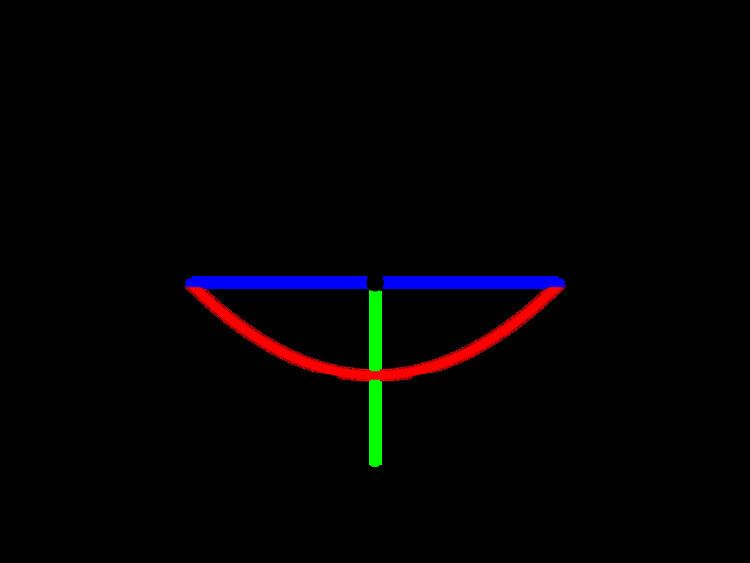 | ||
The universal parabolic constant is a mathematical constant.
Contents
It is defined as the ratio, for any parabola, of the arc length of the parabolic segment formed by the latus rectum to the focal parameter (twice the focal length). It is denoted P. In the diagram, the latus rectum is pictured in blue, the parabolic segment that it forms in red and the focal parameter in green. (The focus of the parabola is the point F and the directrix is the line L.)
The value of P is
(sequence A103710 in the OEIS). The circle and parabola are unique among conic sections in that they have a universal constant. The analogous ratios for ellipses and hyperbolas depend on their eccentricities. This means that all circles are similar and all parabolas are similar, whereas ellipses and hyperbolas are not.
Derivation
Take
Properties
P is a transcendental number.
Proof. Suppose that P is algebraic. ThenSince P is transcendental, it is also irrational.
Applications
The average distance from a point randomly selected in the unit square to its center is
